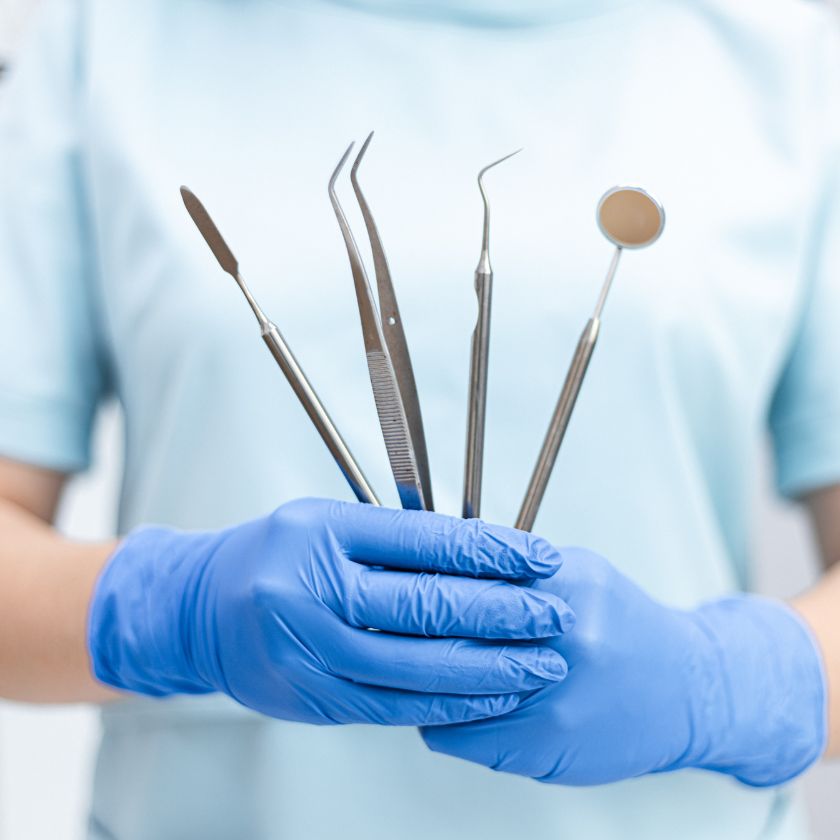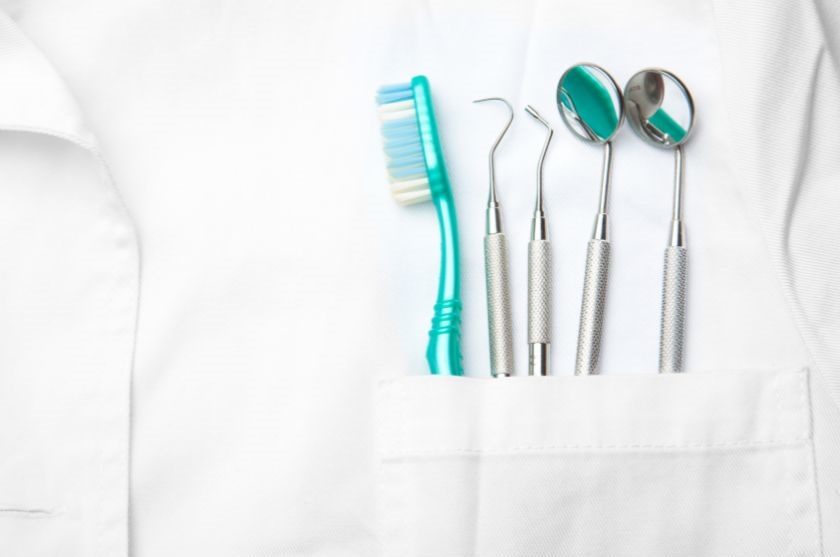Instrument Care

Proper care and maintenance of surgical instruments are essential to ensure their longevity and optimal performance. At Artman Instruments, we understand the importance of instrument care, and we provide you with comprehensive guidelines to help you maintain your instruments in pristine condition. Following these professional instrument care practices will not only extend the lifespan of your valuable surgical tools but also contribute to the safety and success of your procedures.
Tap water should never be used for cleaning surgical instruments due to the presence of foreign ions that can cause damage. High concentrations of chlorides, for instance, can lead to pitting and stress-related fractures. Moreover, minerals in the cleaning water can result in discoloration. To safeguard against these issues, it is strongly recommended to utilize salt-free, demineralized water exclusively for instrument cleaning.
Preparation for Cleaning:
The cleaning process should commence immediately after the use of instruments. However, if immediate cleaning is not possible, we advise placing the instruments in a basin of distilled water or a solution of neutral pH detergent until proper cleaning can be carried out. It is important to note that storing instruments in aqueous solutions for extended periods should be avoided. If instruments are temporarily stored in a basin, ensure that the basin is drained and cleaned daily.
Manual Cleaning Suggestions:
To achieve optimal cleaning results, adhere to the following recommendations:
Ensure that powdered cleaning solutions are given ample time to dissolve completely before use.
We highly recommend utilizing a neutral pH cleaner specifically formulated for surgical instruments. Products with other pH levels may compromise the integrity of the instruments.
Regularly change the cleaning solution on a daily basis to prevent concentration increase and potential corrosion. It is crucial to remember that dirty solutions are less effective in achieving thorough cleaning.
When manually cleaning instruments, utilize lint-free, soft textile cloth, paper cloth, soft plastic brushes (toothbrush), or water spray guns.
After manual cleaning, perform two consecutive rinses: first with tap water and then with distilled water. This two-step rinsing process effectively removes surgical debris and eliminates any contaminants that may be present in tap water.
Thoroughly dry the instruments following rinsing. Whenever possible, employ forced air drying methods. In the absence of forced air drying, gently remove excess water from the instruments by shaking them and subsequently place them on clean, dry, lint-free towels for drying.

Ultrasonic Cleaners:
Ultrasonic cleaners provide an efficient and effective means of cleaning surgical instruments. To ensure optimal results and preserve the instruments' integrity, observe the following guidelines:
Promptly clean away any buildup of rust-like substances, particularly around the box lock of needle holders and hemostats or on the screws of scissors. A soft toothbrush should be used for this purpose.
When placing instruments in the ultrasonic cleaner, ensure that sharp blades, such as scissors, knives, and osteotomes, do not come into contact with other instruments.
It is essential to fully submerge all instruments during the cleaning process.
Avoid mixing dissimilar metals (e.g., stainless steel, copper, chrome-plated) in the same cleaning cycle.
After ultrasonic cleaning, rinse the instruments thoroughly with distilled or deionized water to remove any residue from the cleaning solution.
Automatic Washer Sterilizers:
For the proper maintenance of your instruments using automatic washer sterilizers, strict adherence to the manufacturer's recommendations is paramount. Additionally, ensure that the instruments are adequately lubricated after the last rinse cycle and before the sterilization cycle.
Instrument Inspection:
Regular inspection of instruments after cleaning is crucial to verify their proper function and condition. Pay close attention to the following aspects:
Scissor blades should glide smoothly from open to closed positions, without looseness when closed. Test scissors by cutting into thin gauze, ensuring that three-quarters of the blade's length cuts all the way to the scissor tips.
Forceps should possess properly aligned tips.
Hemostats and needle holders should not exhibit any light between the jaws. They should lock and unlock easily, and the joints should not be excessively loose. Additionally, check needle holders for any signs of wear at the tips.
Suction tubes should be clean inside.
Retractors should open, close, and lock properly.
All cutting edges should be sharp and undamaged.
Steam Sterilization:
Steam sterilization is a critical step in ensuring the sterility of surgical instruments. Follow these guidelines to optimize the steam sterilization process and protect your instruments:
Prior to sterilizing the instruments, complete an "empty" cycle daily to remove any foreign substances and prevent corrosion damage.
Adhere to the manufacturer's recommended load for the sterilizing unit to prevent excessive condensation. If heavy sets are unavoidable, spread the instruments out to minimize condensation buildup.
Handle delicate scissors with care to prevent tip breakage.
Never lock an instrument during autoclaving, as the steam cannot reach the metal-to-metal surfaces. Locking the instrument may result in cracks in hinged areas due to heat expansion during the autoclave cycle.
Once sterilized, ensure that the instruments are thoroughly dried before storage. Inadequate drying time may result in unsightly water spotting.
Cold Sterilization:
While cold sterilization solutions can provide effective sterilization or disinfection, it is important to exercise caution due to the potential harm they can cause to surgical instruments. Most cold sterilization solutions require a 10-hour immersion to render the instruments sterile, which can be more detrimental to the instruments than the typical 20-minute autoclave cycle. If disinfection is the primary requirement, cold sterilization is recommended, as it achieves the desired effect in just 10 minutes. It is vital to understand the distinction between "sterile" (no living organisms survive) and "disinfected" (essentially clean).
Always utilize the appropriate sterilization and cleaning techniques to ensure that your instruments are in the required condition for use.
Important Note: For instruments with tungsten carbide inserts, such as needle holders, scissors, and tissue forceps, it is crucial to avoid solutions containing Benzyl Ammonium Chloride, as they will cause irreversible damage to the tungsten carbide inserts.
Lubricants and Detergents:
In addition to lubricating moving parts, high-quality lubricants serve as protective agents against rust, corrosion, and discoloration. Proper lubrication, as part of a regular instrument care program, minimizes instrument wear. A one-minute soaking with the appropriate lubricant before autoclaving provides adequate protection.
For surgical instruments, we highly recommend using neutral pH detergents that are specifically formulated to be gentle on stainless steel and tungsten carbide inserts. These detergents effectively clean instruments during both manual and ultrasonic cleaning processes, without compromising their integrity.
Handling New Instruments:

When handling new instruments, it is essential to follow the prescribed procedures. Clean and rinse new instruments before their initial sterilization. Additionally, avoid storing instruments in cabinets or areas where they may be exposed to chemicals that produce corrosive vapors.
While our instruments are passivated to enhance their durability, serious damage can still occur if they come into contact with certain substances, such as hydrochloric acid, iodine, ferric chloride, bleach, and dilute sulfuric acid. Moreover, instruments should be kept away from aluminum chloride, Lysol, Dalkin's Solution, barium chloride, mercury chloride, ferrous chloride, bichloride of mercury, phenol, stannous chloride, calcium chloride, carbolic acid, tartaric acid, potassium permanganate, potassium thiocyanate, chlorinated lime, and sodium hypochlorite.
At Artman Instruments, we are committed to providing you with the highest quality surgical instruments and ensuring that you have the knowledge and guidance to care for them properly. Following these professional instrument care practices will help you maintain the integrity and performance of your instruments, enabling you to deliver exceptional surgical outcomes.
|
Problem |
Cause |
Prevention |
|
Spotting |
Mineral deposits |
- Conduct regular inspections of autoclave operations. - Utilize chloride-free solutions for sterilization, disinfection, and cleaning. - Opt for distilled or mineral-free water for rinsing and cleaning. |
|
Rust |
Film left by steam |
- Verify the purity of the water supply. - Assess water softener composition, if applicable. - Perform steam pipe purging, especially in new installations. - Adhere to manufacturer's specifications for sterilizer cleaning. |
|
Rust |
Deposit |
- Avoid mixing stainless steel with other metals, particularly if there is evidence of defective plating. - Rinse instruments meticulously with distilled water, especially if tap water contains high metallic content. - Thoroughly remove debris from the box lock. - Ensure comprehensive drying of all instruments, employing the full-time cycle, especially when instruments are wrapped. |
|
Pitting |
Chemical and electronic attack |
- Immediately rinse instruments thoroughly after use. - Minimize exposure to chlorides and acids. - Select detergents with optimal pH levels. - Refrain from mixing metals in ultrasonic cleaners. |
|
Black to purple stains |
Ammonia |
- Avoid exposure to ammonia in solutions and cleaning compounds. - Thoroughly rinse instruments, preferably with distilled water. |
|
Brown stains |
Minerals |
- Regularly assess the water supply in the sterilizer. - Verify the quality of cleaning compounds and detergents in use. - Adhere to manufacturer's guidelines for cleaning the sterilizer's interior. |

